In late March, officials and experts from 21 countries and the European Union met in Stockholm to discuss verification challenges related to future nuclear disarmament, as part of the work under the International Partnership for Nuclear Disarmament Verification (IPNDV). An often overlooked aspect of nuclear disarmament is the technical processes by which countries could dismantle their nuclear weapons in a verifiable way. “Verification is a necessary part of any disarmament agreement,” said Andrés Jato, Head of the Department for Disarmament and Non-Proliferation in the Swedish Ministry of Foreign Affairs, during his introductory remarks at the Stockholm meeting. “I also firmly believe that verification will benefit from close collaboration between nuclear weapon states, possessor states and non-nuclear weapon states.”
This is why the IPNDV is so important. It brings together countries with and without nuclear weapons to understand the challenges associated with nuclear disarmament verification and identify potential solutions to those challenges.
Why is Nuclear Disarmament so Difficult?
The Treaty on the Non-proliferation of Nuclear Weapons (NPT) is the foundation of the global nuclear nonproliferation and disarmament regimes. Under this treaty, countries agree to “pursue negotiations in good faith on effective measures relating to cessation of the nuclear arms race at an early date and to nuclear disarmament.” In addition, states commit not to transfer or receive nuclear weapons, or information that could assist a state to build nuclear weapons. These two obligations lead to the question: how can the world’s nuclear weapons stockpile be dismantled in a way that is safe, secure, and verifiable for all parties, while not revealing any proliferation-sensitive information?
Effective verification is a key feature of all successful nuclear reduction agreements. However, the requirements for verification will become increasingly demanding as the number of weapons decreases and those agreements become more complex and intrusive. For a future nuclear disarmament agreement, verification will require procedures and technologies that provide countries with sufficient confidence that nuclear weapons are being dismantled, and that no country can cheat on its obligations.
In addition, such procedures and technologies must be developed in a way that protects national security and prevents the spread of proliferation sensitive information, while still providing inspectors with sufficient confidence to verify reductions. While the current global security situation does not appear likely to support further reductions of nuclear weapons in the near-term, states should not conclude that work on new and innovative verification measures is futile. The reality is quite the opposite. Without the pressure of on-going negotiations, experts have the ability to focus on the complex technical challenges associated with verifying further reductions, and can take the time needed to collectively address those challenges and identify potential solutions.
IPNDV: The Path Forward
The IPNDV is working steadily toward solutions to these challenges, with the aim of identifying and developing the necessary technical expertise, processes, and procedures that will be needed to support future negotiations of additional agreements on nuclear disarmament. The Partnership recently completed the first phase of its work — a two-and-a-half year process that included meetings in eight countries across four continents.
Phase I was focused narrowly on one of the most difficult elements of nuclear disarmament verification: how to verify the dismantlement of a nuclear warhead. In its final report, the Partnership’s key finding concluded that, “Although tough challenges remain, multilaterally monitored nuclear warhead dismantlement should be possible while at the same time successfully managing safety, security, nonproliferation, and classification concerns.”
In Stockholm, the Partnership met to continue discussions under Phase II, launched in December 2017 in Buenos Aires, which will expand its scope of work to explore the types of declarations required to verify nuclear disarmament, the procedures to verify nuclear weapon dismantlement (starting with deployed systems all the way through disposition of weapon components), and the technologies needed for such verification tasks.
At a time of such strong divisions regarding how to make progress on nuclear disarmament, the IPDNV stands out as an example of effective collaboration among states with and without nuclear weapons. As Acting Assistant Secretary of State for Arms Control, Verification and Compliance Anita Friedt recently said, “The Partnership’s work towards credible verification is key to creating the conditions for future nuclear disarmament.”
Note: A version of this article originally appeared on the U.S. Department of State’s official blog, DipNote, and in their publication page on Medium.



